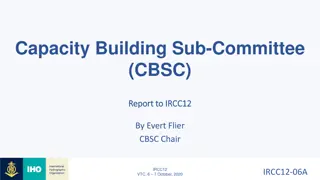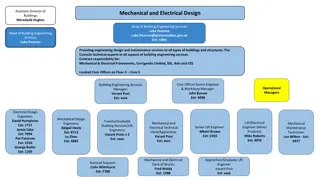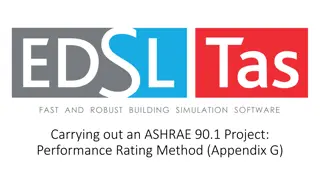Building Services
Implementing sound-absorbing materials on walls, optimizing speaker to listener distances, and treating mechanical systems with noise-reducing materials are key strategies for enhancing acoustics in lecture halls. Proper acoustic treatment during the design phase ensures speech comfort and minimal reverberation, improving overall listening experience.
Download Presentation

Please find below an Image/Link to download the presentation.
The content on the website is provided AS IS for your information and personal use only. It may not be sold, licensed, or shared on other websites without obtaining consent from the author.If you encounter any issues during the download, it is possible that the publisher has removed the file from their server.
You are allowed to download the files provided on this website for personal or commercial use, subject to the condition that they are used lawfully. All files are the property of their respective owners.
The content on the website is provided AS IS for your information and personal use only. It may not be sold, licensed, or shared on other websites without obtaining consent from the author.
E N D
Presentation Transcript
Building Services Presented by: Ar. Kavita Nagpal
Sound Treatment Approach for Lecture Halls Sound-Absorbing Acoustic Treatment Options Decreasing reverberations tim es will help background noise, which will make listening achieve lower reverberation times, side walls should be treated with sound-absorbing material. Acoustic-absorption panels are one of the most popular choices for this type of treatment. Panels reduce easier. To
Sound Speaker to Listener It may sound evident, but keeping as short of a distance as possible between the last row of audience seating and the speaker is essential. Not only will this make listening easier for the entire audience, it will also create better sight lines so that everyone in the room can both see and hear the speaker. Diffusion: Distance from
Sound Treatment for Mechanical Systems Mechanical systems are often the main source of intrusive noise in classrooms and lecture halls. HVAC and other mechanical systems are needed to keep the building running, but can often create a lot of noise. For new buildings, you can minimize noise by locating machinery away from walls to avoid additional structure-borne noise from vibrations. You can also use buffer zones, like storage facilities, to build distance between noise-sensitive rooms and machinery. If working on an existing building where machinery cannot be relocated, treat the parts with sound-absorbing material to reduce noise at the source.
Lecture Hall Acoustics In an area that is so critical for speech comfort and intelligibility, acoustic treatment must be considered during the design phase of these classrooms. Ensure that you implement sufficient acoustic treatment, and design geometries for clear vision and minimal reverberation.























